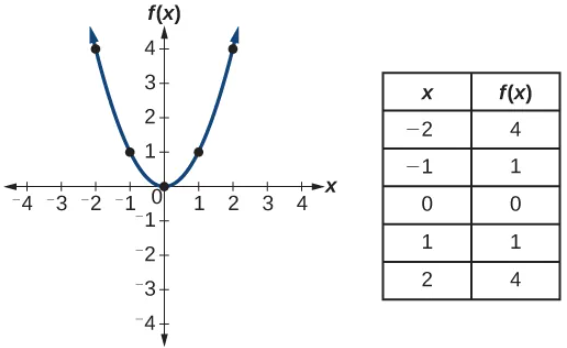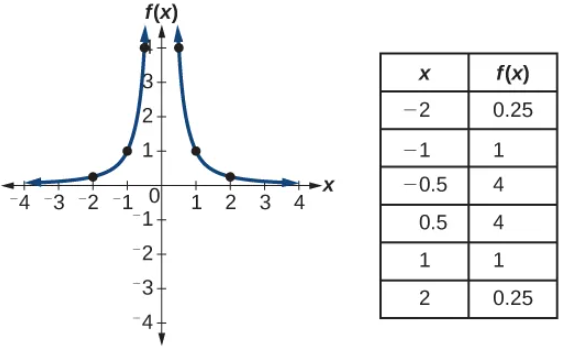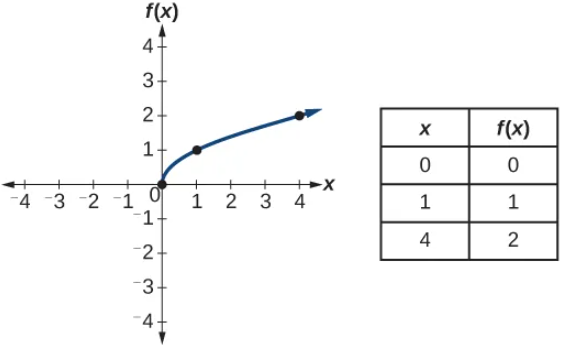Identifying Basic Toolkit Functions
When learning to read, we start with the alphabet. When learning to do arithmetic, we start with numbers. When working with functions, it is similarly helpful to have a base set of building-block elements. We call these our “toolkit functions,” which form a set of basic named functions for which we know the graph, formula, and special properties. Some of these functions are programmed to individual buttons on many calculators. For these definitions we will use [latex]x[/latex] as the input variable and [latex]y=f\left(x\right)[/latex] as the output variable.
We will see these toolkit functions, combinations of toolkit functions, their graphs, and their transformations frequently throughout this module. It will be very helpful if we can recognize these toolkit functions and their features quickly by name, formula, graph, and basic table properties. The graphs and sample table values are included with each function shown below.
| Toolkit Functions | |||||
|---|---|---|---|---|---|
| Name | Function | Graph | Key Features | Behavior | Symmetry |
| Constant | f(x) = c, where c is a constant |
 |
Slope is 0, y-intercept at the constant value | Function is constant; doesn’t increase or decrease | Symmetric about the y-axis (even function) |
| Identity/Linear | f(x) = x |
 |
Slope is constant and equals 1, intercept at the origin | Always increasing | Odd symmetry (symmetric about the origin) |
| Absolute value | f(x) = |x| |
 |
Minimum at (0,0), called the vertex | Increasing on (0,∞), decreasing on (-∞,0) | Symmetric about the y-axis (even function) |
| Quadratic | f(x) = x² |
 |
Minimum at (0,0), called the vertex | Increasing on (0,∞), decreasing on (-∞,0) | Symmetric about the y-axis (even function) |
| Cubic | f(x) = x³ |
 |
Inflection point at the origin | Increasing on (-∞,∞) | Symmetric about the origin (odd function) |
| Reciprocal | f(x) = 1/x |
 |
Exclusion value at x=0 and y=0 | Decreasing on (-∞,0) ∪ (0,∞) | Symmetric about the origin (odd function) |
| Reciprocal squared | f(x) = 1/x² |
 |
Exclusion value at x=0, never touches x or y axis | Increasing on (-∞,0), decreasing on (0,∞) | Symmetric about the y-axis (even function) |
| Square root | f(x) = √x |
 |
Starts at the origin (0,0) | Increasing for all x in [0,∞) | Not symmetric |
| Cube root | f(x) = ∛x |
 |
Crosses at the origin (0,0) | Increasing for all x in (-∞,∞) | Symmetric about the origin (odd function) |